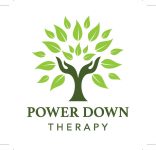A pregnant woman undergoes various changes in her body which can be subtle or obvious and these changes can have a profound effect on how she moves. These changes help assist the development of the growing foetus, and prepare the mother’s body for childbirth.
Exercise, therefore, should take into account such transitions, helping prepare the woman for a safe delivery and a speedy recovery afterwards.
Changes include:
Cardiovascular system – some of the major changes include:
- Cardiac output increases: stroke volume and diastolic volume surge so heart pumps more blood per heartbeat.
- Blood volume increases by c.40%.
- Resting pulse increases by as much as 8bpm in the first trimester and 15bpm by the third trimester, in order to pump the extra blood around the body.
- Blood pressure can decrease a little, leading to dizziness.
- Pregnancy hormone surges have the effect of causing the muscles in the body to become more relaxed.
- Vascular resistance decreases; thus, blood is slower to return to the heart, resulting in mild hypertrophy.
Respiratory system – this rises to compensate for the increase in maternal oxygen consumption, which is needed for the demands of the foetus, the uterus, and the placenta. Changes include:
- Increased breathing rate.
- Decreased functional capacity.
- Feeling ‘out of breath’ more quickly.
- As the uterus presses on the diaphragm, it becomes harder to breathe comfortably.
Gastrointestinal system – As the baby grows the uterus pushes up and displaces the stomach and the intestines. Changes include:
- Constipation and / or bloating.
- Increased acid reflux.
- Pica – craving for non-food items.
Biomechanical changes - affecting balance and proprioception, weight distribution, joint laxity and mobility, upper and lower back fatigue, and increased nerve and blood vessel compression.
Breast tissue changes
Endocrine system changes
Urinary system changes
Musculoskeletal changes – e.g., the hormone relaxin causes the ligaments that hold the pelvic bones together gradually lengthen to prepare for birth.
The benefits of exercise during this time are similar to that of the general population – better sleep, mood, posture, muscle tone, energy, etc. However, it is recommended that medical clearance should be obtained in order to train safely, and that your programme follows the FITT for Pregnancy principles. Do not start a new fitness regime once you become pregnant, and consult an exercise professional for help and advice in setting up a modified programme.
FITT For Pregnancy
Frequency
- Exercise 3 days a week, emphasising continuous, steady-rate effort.
- Reduce intensity if exercising more frequently.
Intensity
- As pregnancy alters the relationship between heart rate and oxygen consumption it can be difficult to have consistent guidelines from HR. Therefore, a more reliable approach can be the Borg RPE (Rate of Perceived Exertion) scale which during pregnancy should fall around 12 (fairly light) to 14 (somewhat hard).
Time
- 30 -40 minutes depending on the person.
Type
- Non-weight-bearing exercise minimises the effect of the added weight plus gravity, making training such as swimming and cycling safe choices.
- Low impact, weight-bearing exercise is a good choice if the mother-to-be has trained this way beforehand.
- Avoid supine activity, e.g., flat bench presses once into the second trimester.
- Yoga, Pilates, TRX and BodyBalance are all good class choices. Let the teacher know you are pregnant and they can provide adaptations.
As always, listen to your body even more as pregnancy progresses. If you feel excessively fatigued, if there is any bleeding, swelling, abdominal pain, palpitations or unusual heart activity stop immediately and seek medical help. Take plenty of rest, hydrate well, eat well and try to sleep and move well. Enjoy every second of this very special time!
Kathy O’Meara is a personal trainer specialising in cancer and cardiac exercise rehabilitation. She holds the National Qualification in Pre and Post Natal Exercise. She is a sports therapist, movement specialist, reflexologist and teaches a range of Les Mills classes at West Wood Club, Westmanstown www.powerdown.ie
Follow her on Instagram: @kathyomearapt or Facebook: Power Down
